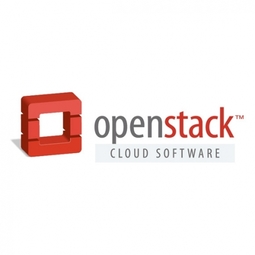Oak Ridge National Laboratory Delivers Accessible, Powerful Supercomputing Environment with Red Hat OpenStack Platform

公司规模
Large Corporate
地区
- America
国家
- United States
产品
- Red Hat OpenStack Platform
- Red Hat Enterprise Linux
技术栈
- OpenStack
- Cloud Computing
实施规模
- Enterprise-wide Deployment
影响指标
- Productivity Improvements
- Innovation Output
- Digital Expertise
技术
- 基础设施即服务 (IaaS) - 云计算
- 基础设施即服务 (IaaS) - 云存储服务
适用行业
- 国家安全与国防
适用功能
- 商业运营
- 产品研发
用例
- 边缘计算与边缘智能
- 远程资产管理
服务
- 云规划/设计/实施服务
- 培训
关于客户
Oak Ridge National Laboratory (ORNL) is a multiprogram science and technology laboratory managed by the United States Department of Energy. It is renowned for housing some of the world's most powerful supercomputers and is at the forefront of research in various critical areas, including physical and environmental sciences, neutron and nuclear science, and more. ORNL's mission is to deliver scientific discoveries and technical breakthroughs that will accelerate the development and deployment of solutions in energy and national security. The laboratory is committed to advancing scientific research and providing state-of-the-art computing resources to support a wide range of research projects. With a focus on innovation and collaboration, ORNL plays a vital role in addressing some of the most pressing challenges facing society today.
挑战
Oak Ridge National Laboratory (ORNL) faced the challenge of extending its supercomputing capabilities to a broader range of scientific research projects. The laboratory needed a flexible and scalable cloud infrastructure to support its diverse research needs, which include physical and environmental sciences, neutron and nuclear science, and more. The existing supercomputing platforms provided the necessary processing power and analytics capabilities, but there was a need for an on-demand, self-service cloud solution to complement these resources. ORNL recognized the importance of open standards and components to ensure the flexibility and scalability of the underlying technology. The laboratory sought a solution that could provide enterprise-class support and reliability while maintaining the agility to scale and meet demand without compromising availability, performance, or IT security requirements.
解决方案
To address the challenge of extending its supercomputing capabilities, ORNL implemented the Red Hat OpenStack Platform as part of its Compute And Data Environment for Science (CADES). This cloud platform was chosen for its flexibility, scalability, and support for open standards. By leveraging the community-driven OpenStack cloud framework, ORNL was able to create a self-serve, Infrastructure-as-a-Service (IaaS) environment that could be customized to meet the specific research needs of its scientific staff. The Red Hat OpenStack Platform, built on the enterprise-grade backbone of Red Hat Enterprise Linux, provided a reliable and secure cloud platform for mission-critical and data-intensive workloads. With the support of Red Hat's global support team and training resources, ORNL was able to deploy and manage the cloud infrastructure effectively. The solution enabled ORNL to extend its supercomputing resources to a broader set of scientific research projects, facilitating data-driven computing and analytics, as well as cross-platform workflows.
运营影响

Case Study missing?
Start adding your own!
Register with your work email and create a new case study profile for your business.
相关案例.

Case Study
Data Capture for Afghanistan Forces
Electronic equipments on the field of Afghanistan provided information on the status of the vehicle and to identify potential threats surrounding it to the British Force. The monitoring and interpretation of this data requires robust and sophisticated digitization for data capture and communication.
Case Study
Enhancing Security and Compliance in Remitly's Global Money Transfer Service with Fastly
Remitly, an online remittance service, was faced with the challenge of securing its proprietary global transfer network. The company needed a security solution that could meet PCI requirements and protect customers' sensitive transactions through its mobile application. The solution had to be capable of defending against new and emerging attack types without impacting performance. Remitly also had to deal with irregular traffic patterns, such as a sudden spike in account transfers from a small network segment on the Pacific coastline of South America. The company needed to determine in real time whether such traffic indicated an attack or valid requests. A traditional web application firewall (WAF) would not be able to distinguish this traffic, potentially leading to customer frustration if the IP was blacklisted.

Case Study
Major Aerospace Company Automates Asset Management
The O&M division of an aerospace and global security company was using spreadsheets to manually track more than 3,000 assets assigned to students and staff. Maintaining audit trails for this high volume of equipment became increasingly time-consuming and challenging. The chore involved knowing precisely what equipment was on hand, what had been issued, its location and the name of the custodial owner of each item. Every aspect of this task was carried owner of each item. Every aspect of this task was carried out by individuals with spreadsheets. Manually documenting the full lifecycle of each asset added to the burden. This included tracking maintenance requirements and records, incidents and damages, repairs, calibrations, depreciation, and end-of-life data.

Case Study
Securing a Large Data Center in the EMEA Region: An IoT Case Study
A leading data-center operator in the EMEA region, with multiple facilities spanning over 25,000 square meters, faced significant security challenges. The operator experienced interruptions in their internal IT network due to unsupervised work of third-party technicians. Despite having a high-end building control system that provided 24x7 monitoring and control to all the building’s infrastructure, the data center was vulnerable from a cyber perspective as it was connected to the IT network infrastructure. The operator launched an urgent OT cyber security project that included both IT-OT network segmentation and OT network asset mapping and anomaly detection. The main objectives were to harden the security of the server systems, secure the facility’s power supply and server cooling system, strengthen the segmentation between building and operational systems, create a visual OT network map, and set up a system for presenting supply-chain attacks that may threaten the data center through equipment vendors’ maintenance activities.

Case Study
Leveraging Graph Technology for Enhanced Cybersecurity: A Case Study on MITRE's CyGraph
MITRE, a federally-funded, not-for-profit company that manages seven national research and development laboratories in the United States, was grappling with the challenge of managing an influx of cybersecurity data. The constant changes in network environments were impacting the security posture of U.S. government agencies. Intrusion alerts, anti-virus warnings, and seemingly benign events like logins, service connections, and file share access were all potentially associated with adversary activity. The cybersecurity researchers at MITRE needed to go beyond rudimentary assessments of security posture and attack response. This required merging isolated data into higher-level knowledge of network-wide attack vulnerabilities and mission readiness. The challenge was not the lack of information, but the ability to assemble disparate pieces of information into an overall analytic picture for situational awareness, optimal courses of action, and maintaining mission readiness. The team also struggled with fully comprehending a given security environment and mapping all known vulnerabilities.

Case Study
Enhancing Security Precision with IoT: A Case Study of Guardsman Group
Guardsman Group, a leading security company in the Caribbean, faced a significant challenge in maintaining the security of its digital infrastructure. The company provides security equipment, personnel, and systems for various businesses across the region. However, one of its offices experienced a security incident that affected all communications at that location. The existing security tools were not sufficient to provide the necessary protection, and it took hours to identify the source of the issue. This incident highlighted the need for a dynamic solution that could proactively identify threats. The company's primary concern was any disruption to its business, as it manages a significant portion of Jamaica's money and cannot afford for its operations to go down.






